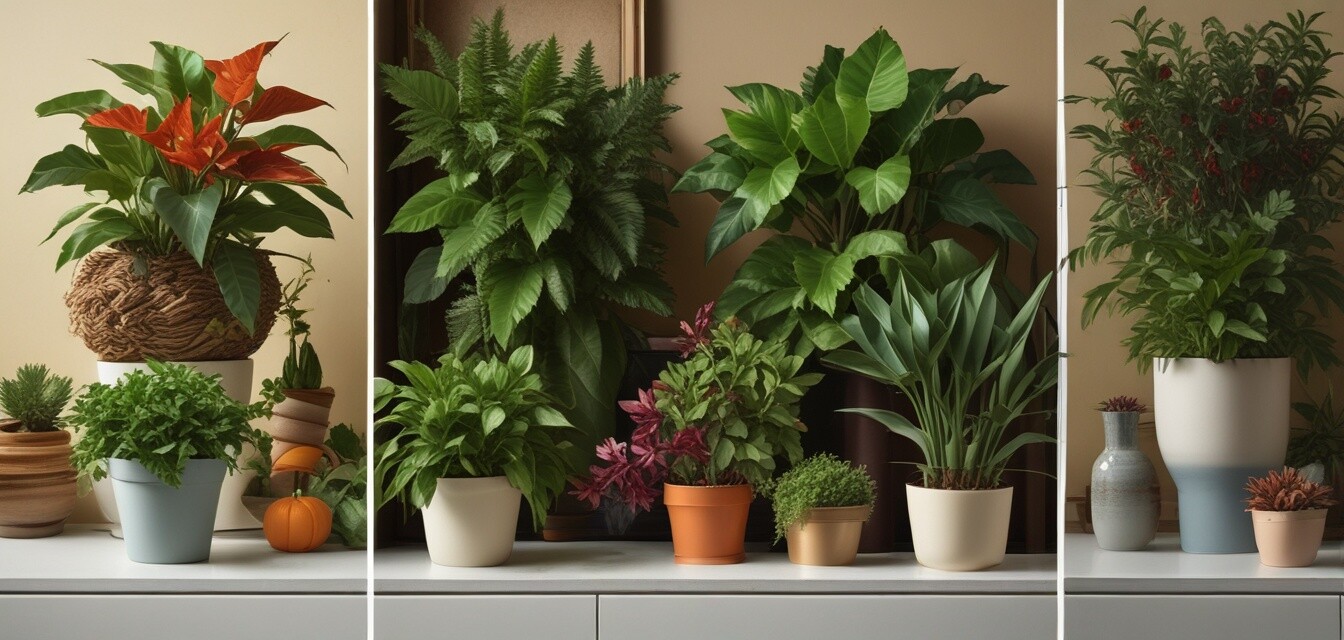
Seasonal Care Tips for Indoor Plants
Key Takeaways
- Adjust watering schedules according to seasonal needs.
- Modify light exposure based on seasonal changes.
- Provide appropriate nutrition tailored for each season.
- Monitor humidity levels, especially during winter.
As the seasons change, so do the needs of your houseplants. Understanding how to care for them throughout the year will help ensure they thrive in your home. This guide covers essential adjustments in light, water, and nutrition, so your indoor plants can flourish regardless of the season.
Spring: Awakening Your Plants
Spring is a time of renewal and growth for houseplants. As temperatures begin to rise and days become longer, your plants will show signs of vigorous growth.
Watering Needs
During spring, it's important to keep an eye on the soil moisture levels. Most indoor plants will require more frequent watering as they start to actively grow.
Light Exposure
Increase the amount of sunlight your plants receive. You may need to reposition them closer to windows or remove any obstructions blocking light.
Nutritional Boost
Introduce a balanced fertilizer to support growth. Fertilizing your plants every couple of weeks can provide them with essential nutrients.
Summer: Managing Heat
In summer, the heat can be intense. This season requires careful watering and positioning to prevent stress on your plants.
Watering Tips
| Plant Type | Watering Frequency |
|---|---|
| Succulents | Only when soil is dry (every 1-2 weeks) |
| Tropical plants | 1-2 times per week |
Light Considerations
Be cautious with direct sunlight exposure during peak hours. Consider using sheer curtains to filter sunlight for sensitive plants.
Fall: Preparing for Dormancy
As temperatures cool down, houseplants begin their transition to dormancy. Adjust your care routine accordingly.
Watering Adjustments
Decrease watering frequency as many plants slow down their growth. Make sure to check that the top inch of soil is dry before rehydrating.
Light Management
As the days shorten, some plants may need supplementary lighting if in low-light spaces. Consider investing in grow lights.
Winter: Comfort and Care
Winter can be harsh, especially for indoor plants that may struggle with lower humidity and reduced natural light.
Humidity Control
Indoor heating reduces humidity. To combat this, mist your plants occasionally or utilize a room humidifier.
Minimal Watering
Most plants will need even less water during the winter. Ensure you check the moisture levels regularly.
Common Issues to Watch For
During all seasons, keep an eye out for common plant issues:
- Pests: Regularly inspect leaves for signs of infestation.
- Yellowing Leaves: Indicates overwatering or nutrient deficiency.
- Wilting: Often a sign of under-watering or environmental stress.
Additional Tips
Beginner Tips for Easy Plant Care
- Start with low-maintenance houseplants to build your confidence.
- Keep a care journal to track watering and fertilizing schedules.
- Select plants suited for your home's light conditions to ensure success.
Pros
- Helps plants grow healthier and stronger.
- Reduces the likelihood of common plant diseases.
- Increases the aesthetic value of your indoor space.
Cons
- Requires regular attention and adjustments.
- Can be overwhelming for beginners.
- May need additional tools like comprehensive light meters and humidity gauges.
Conclusion
Adapting your care routine to the changing seasons is crucial to maintaining healthy houseplants. By making informed adjustments to watering, light, and nutrition throughout the year, you can create an inviting environment for your greenery. For more in-depth care tips, be sure to check our Care Tips section, and explore a variety of low-maintenance houseplants that match your lifestyle!

